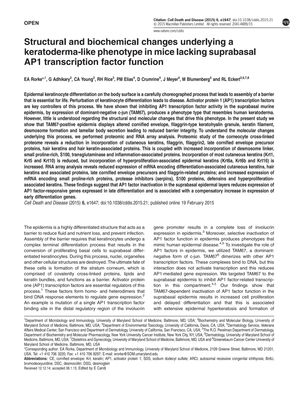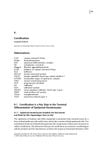Structural and Biochemical Changes Underlying a Keratoderma-Like Phenotype in Mice Lacking Suprabasal AP1 Transcription Factor Function
February 2015
in “
Cell Death and Disease
”
AP1 transcription factor keratoderma cornified envelope keratohyalin granules keratin filaments desmosomes lamellar body secretion barrier integrity proteomic analysis RNA array analysis differentiation-associated proteins keratins hyperproliferation-associated proteins inflammation-related proteins late differentiation gene expression early differentiation gene expression AP1 factor skin barrier skin proteins skin inflammation skin differentiation

TLDR Inhibiting AP1 in mice skin causes structural changes and weakens the skin barrier.
In this study, researchers investigated the effects of inhibiting AP1 transcription factor activity in the suprabasal epidermis of mice, which resulted in a keratoderma-like phenotype. They found that this inhibition led to structural changes such as altered cornified envelope, keratohyalin granules, keratin filaments, desmosomes, and lamellar body secretion, ultimately reducing barrier integrity. Proteomic and RNA array analyses revealed a decrease in the incorporation and expression of differentiation-associated proteins and keratins, while there was an increase in hyperproliferation-associated and inflammation-related proteins. These findings suggested that AP1 factor inactivation disrupts late differentiation gene expression and triggers a compensatory increase in early differentiation gene expression.
